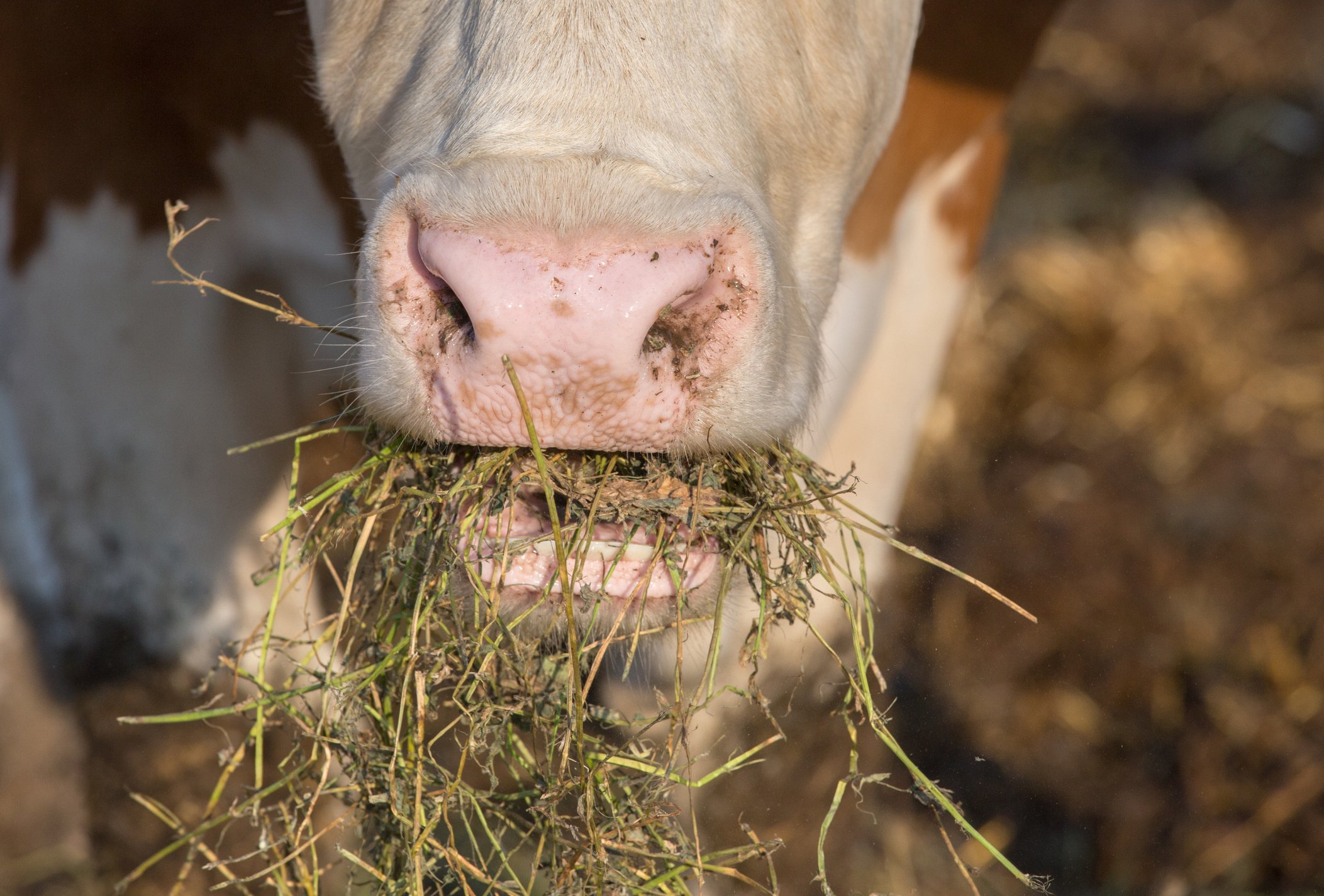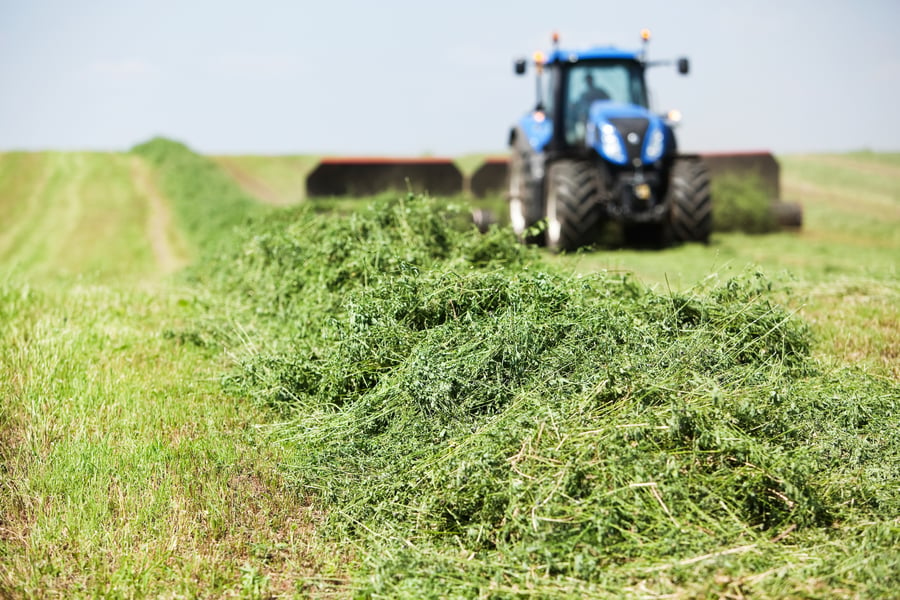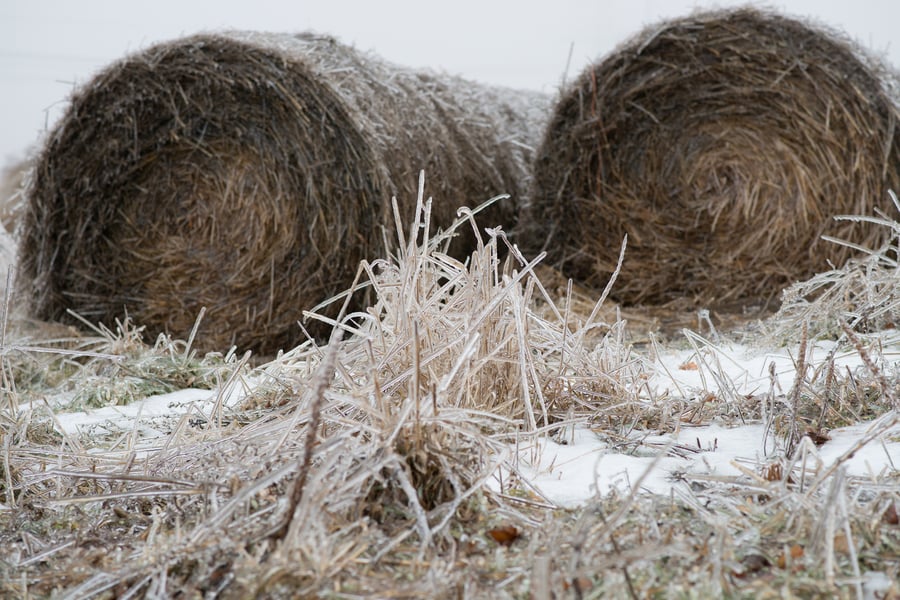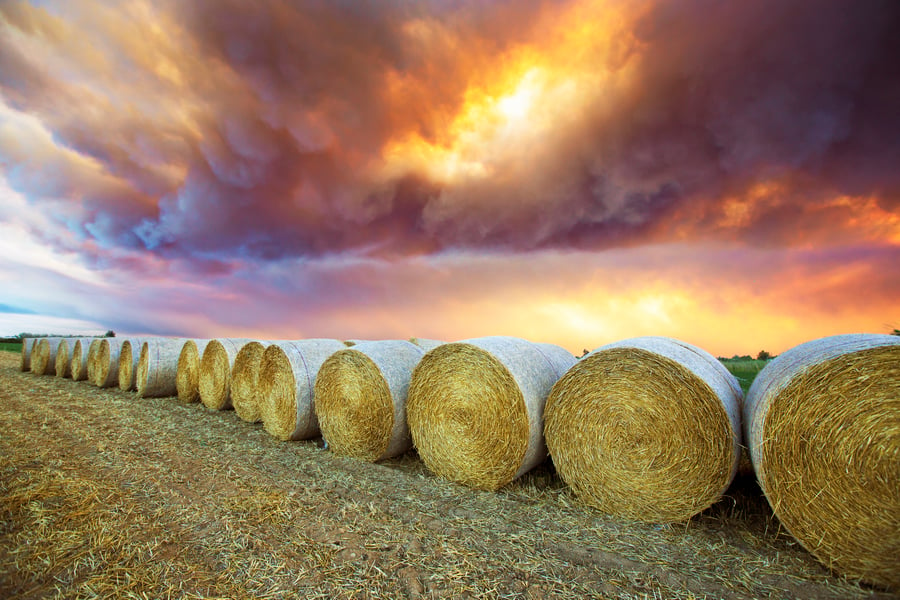Advanced Hay Moisture Control

This is our fifth article in a series of six discussing how you can ensure the quality of your hay product by monitoring its moisture content (%MC) from the windrow through baling, storage, and delivery.
Today's agricultural markets are more competitive than ever. To ensure they can command top prices, hay producers must be certain their product meets optimal quality standards. As plant products, alfalfa and timothy hay can achieve maximum nutritional quality throughout the growing stage when receiving appropriate fertilizer and water. After cutting, before and during baling, and while in storage, however, the legume and grass hays are vulnerable to contamination and rot caused by the naturally occurring moisture within their environment. Remarkably, both too much and too little moisture within the bales can cause problems:
- Excess moisture can generate thermal expansion within the packed bale, which creates a risk of spontaneous combustion. That fire concern threatens the bale, any adjoining bales, and the storage structure.
- Insufficient moisture can erode hay's nutritional value or even render it wholly unfit for consumption by the animals it's intended to feed. This concern may cause the loss of the sale and, potentially, the loss of your reputation.
Consequently, maintaining optimal moisture levels through all cycles of your hay farming operations becomes a critical element of the hay production cycle -- and the success of your business.
Delmhorst's FX Range of Hay Moisture Meters
The engineers at Delmhorst understand these challenges and developed the FX Range of moisture meters to manage all aspects of moisture control in hay. Hay can be susceptible to disintegration and rot after it's cut and throughout the baling/storage processes. Like any plant material, it absorbs the elements of its environment. Dry conditions will dry it out; rain or even high humidity will cause its internal %MC to rise.
Reliable measurements of the %MC in hay in the windrow, throughout the baling process, and into storage give you the information you need to monitor and protect the product. You will ensure customer satisfaction by tracking and controlling that %MC from harvest to delivery. Delmhorst's FX-20 and FX-30 moisture meters for hay will help you attain that success with every growing cycle.
The FX-20 and FX-30 moisture meters introduce top-of-the-line features to ease moisture control management. The FX-30 device, in particular, is unique among hay moisture meters for its compatibility with Delmhorst's proprietary EDGE™ App. Its Bluetooth® capability enables data sharing from anywhere the information is needed, and the advanced meter shares more than just %MC data. Geotags and time stamps are used to verify where and when measurements were taken, which adds critical product information to the database generated by annual crop outputs. The combination of %MC accuracy and digital connectivity makes the FX-30 an unbeatable tool for every hay producer.
The Perfect Meter for Your Farm Environment
Moisture content in hay is also affected by how it's managed, and there are many ways to grow, harvest, and distribute hay crops. Accordingly, Delmhorst designed its meters and probes to accommodate the many hay farming alternatives available today.
Bale Shapes and Sizes
- Small Square Bales
Remarkably, smaller square bales can retain higher percentages of moisture and still be safe to use. These bales are typically not so tightly packed, and a looser package means more air circulation and less opportunity for heat or bacteria to generate. A moisture level of between 18% and 20% is generally considered optimal in small square bales.
- Large Square Bales
Conversely, large square bales should have a lower %MC to prevent the development of fire or health hazards. A %MC of between 12% and 16% is ideal in this case. These bales are packed much more densely (16 lbs. per cubic foot compared to only 11 lbs. per cubic foot in the smaller bale), which poses a higher risk. Large square bales in storage or transit for extended periods should have a %MC of 12% to ensure they don't develop adverse conditions before delivery.
- Round Hay Bales
Round bales provide the benefit of high nutritional value and require less labor and equipment investment than other packages. The round bale's density will determine its optimal %MC, although many hold steady at approximately 15%.
Environmental Factors
Another factor that influences %MC in hay is where it's stored. Typically, baled hay is stored in a barn or even in the field. In both circumstances, the relative %MC in each bale can differ significantly from its neighbor. Bales stacked in a back, dark corner of the barn might retain higher moisture levels than bales sitting closer to open doors, for example. Accordingly, the probes used by the FX-20 and FX-30 are designed to capture moisture data from every bale you test accurately and efficiently, regardless of its location.
Delmhorst's FX-20 and FX-30 provide peace of mind to any hay producer using the precision tool to ensure the highest possible product quality across all stages of the farming operation. How might these advanced farming tools help you improve and maintain the high quality of your hay crop? Reach out to a Delmhorst professional today to learn how a Delmhorst moisture meter for hay can enhance your hay crop quality and your bottom line.
Subscribe to Our Blog
Post Related

Mastering Hay Moisture Testing with Delmhorst's FX Range


